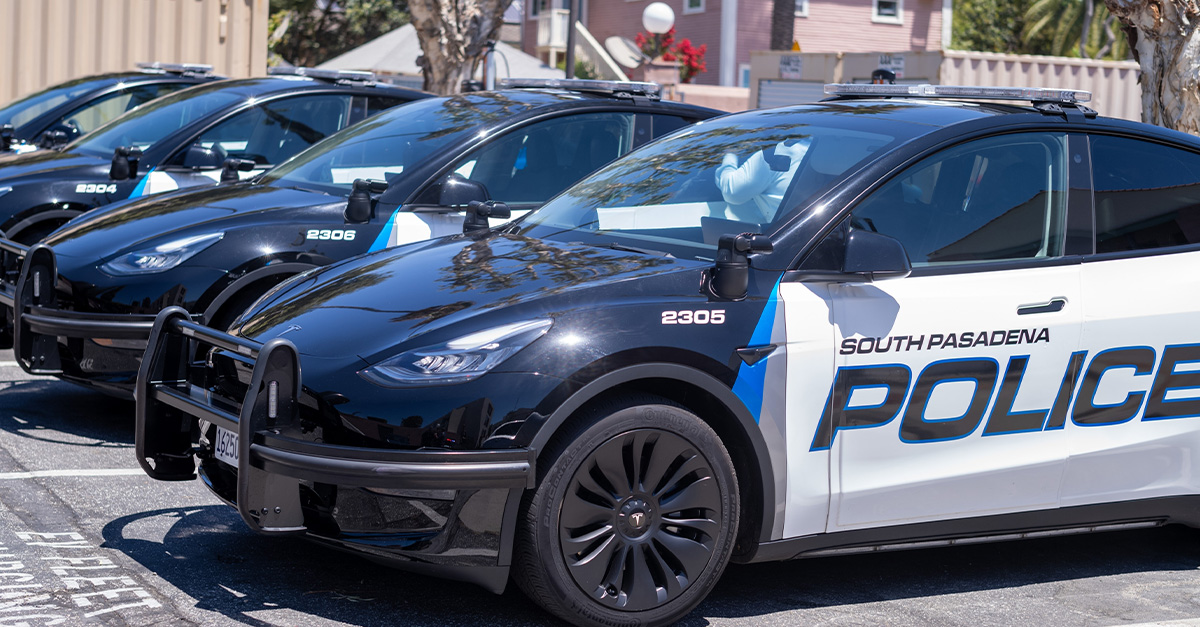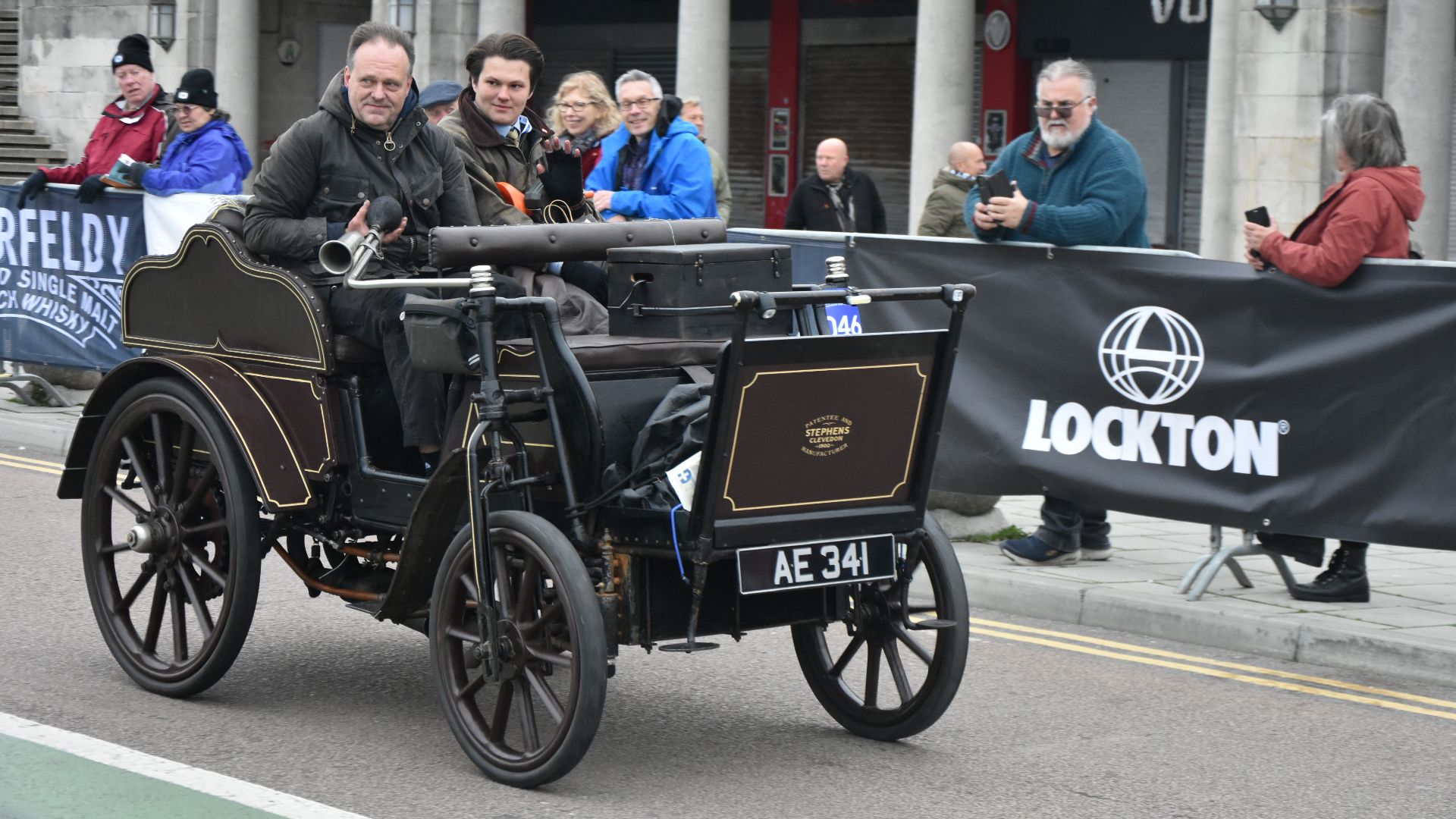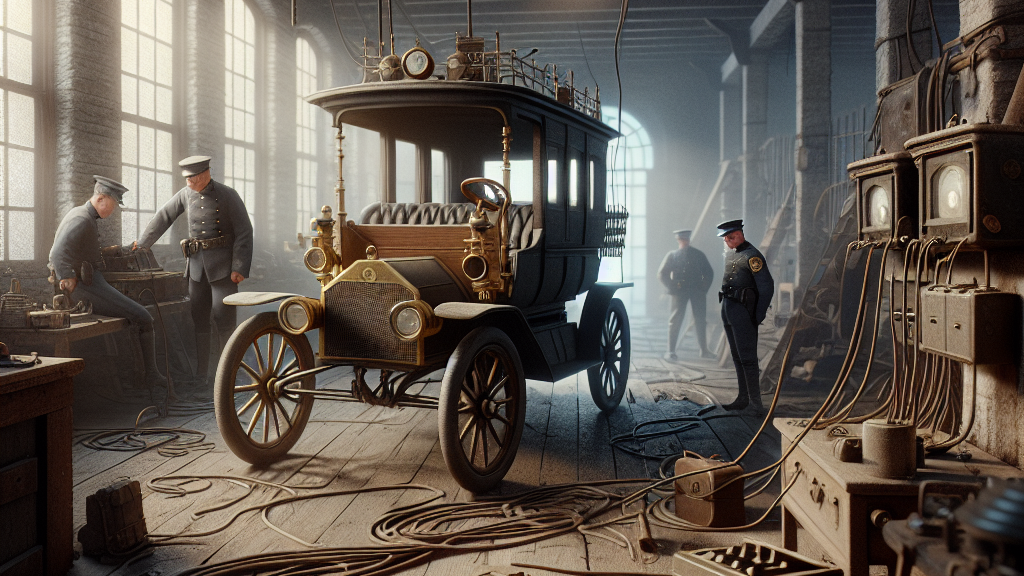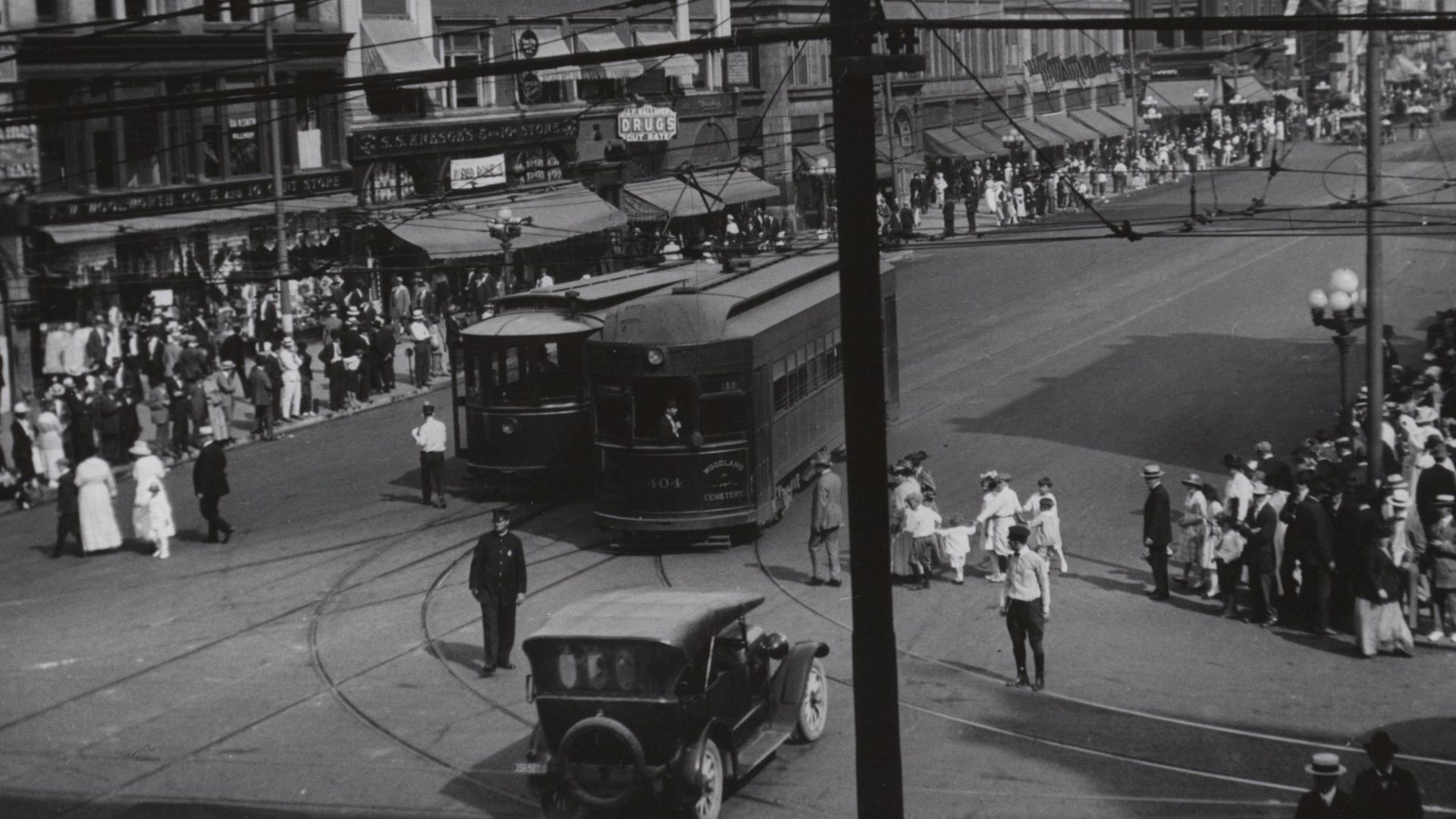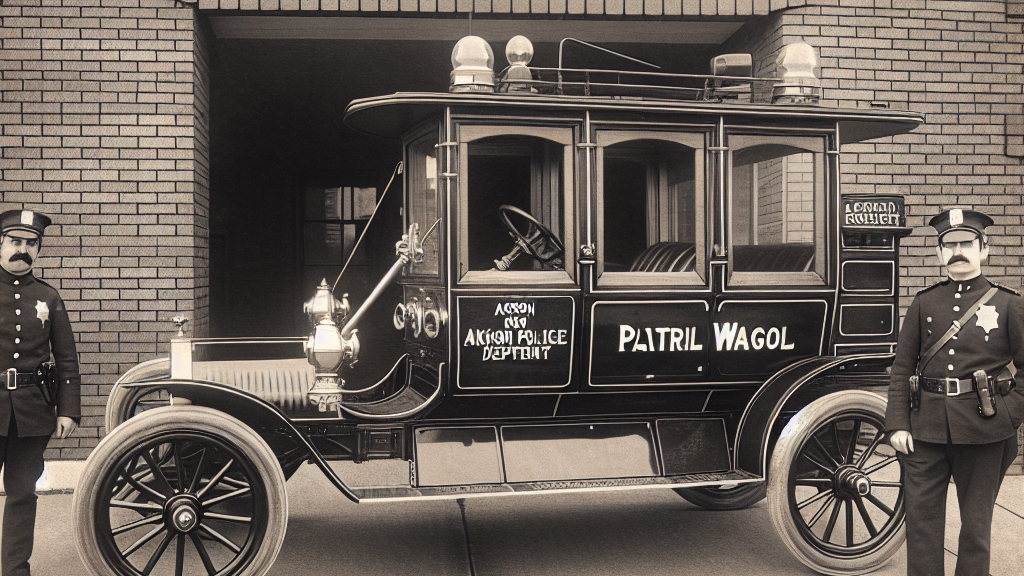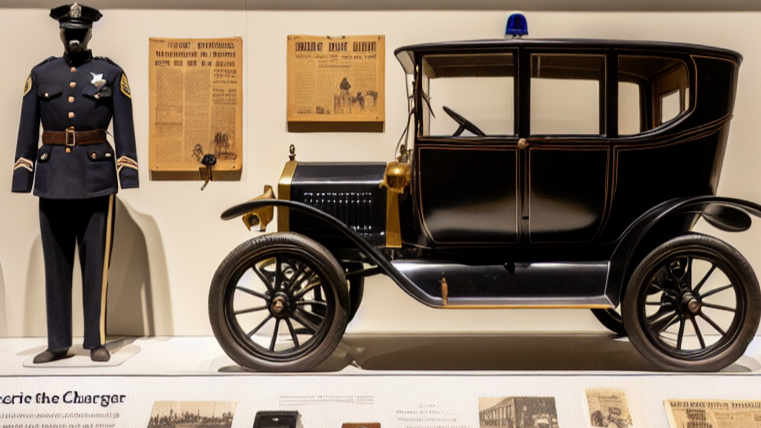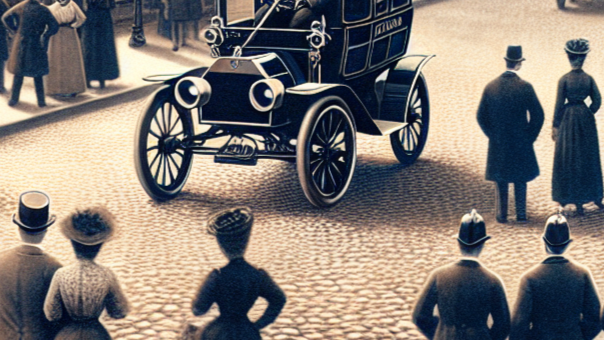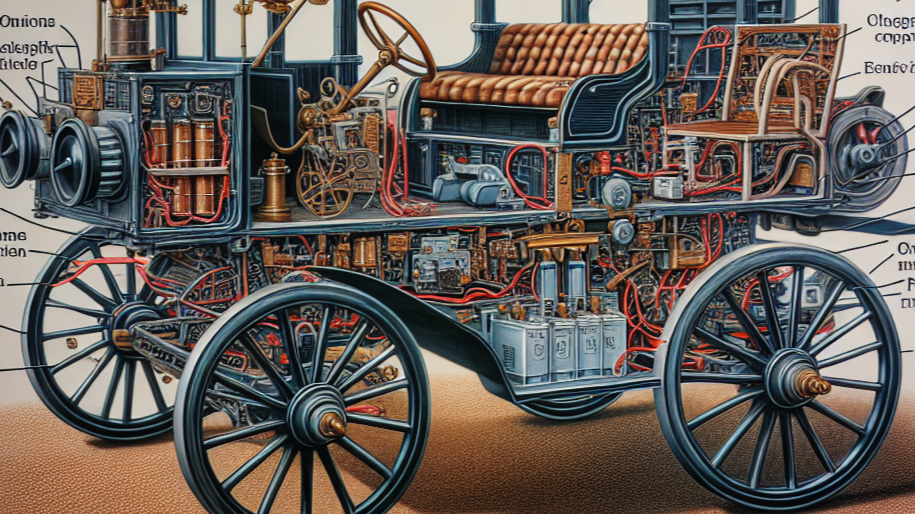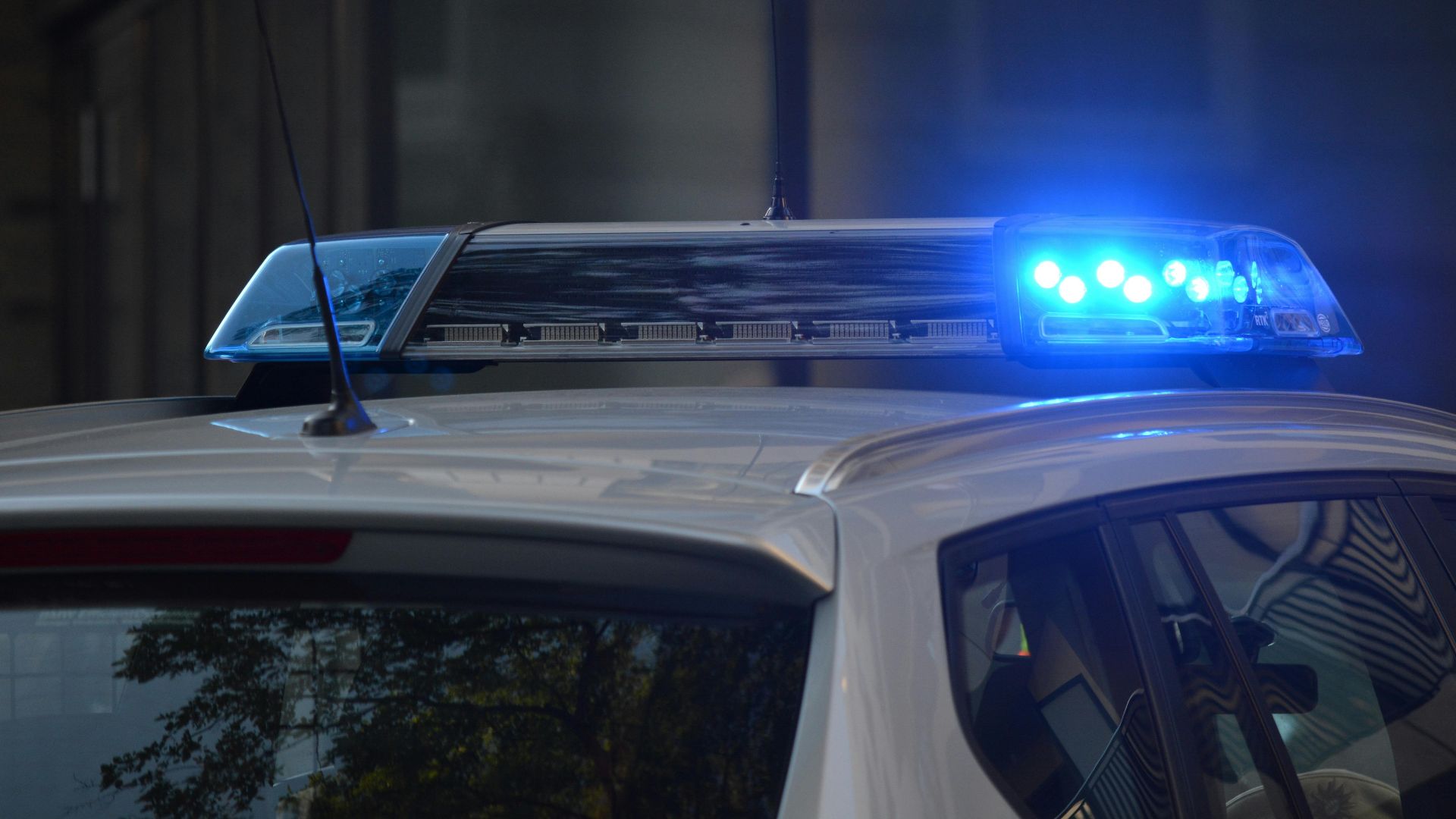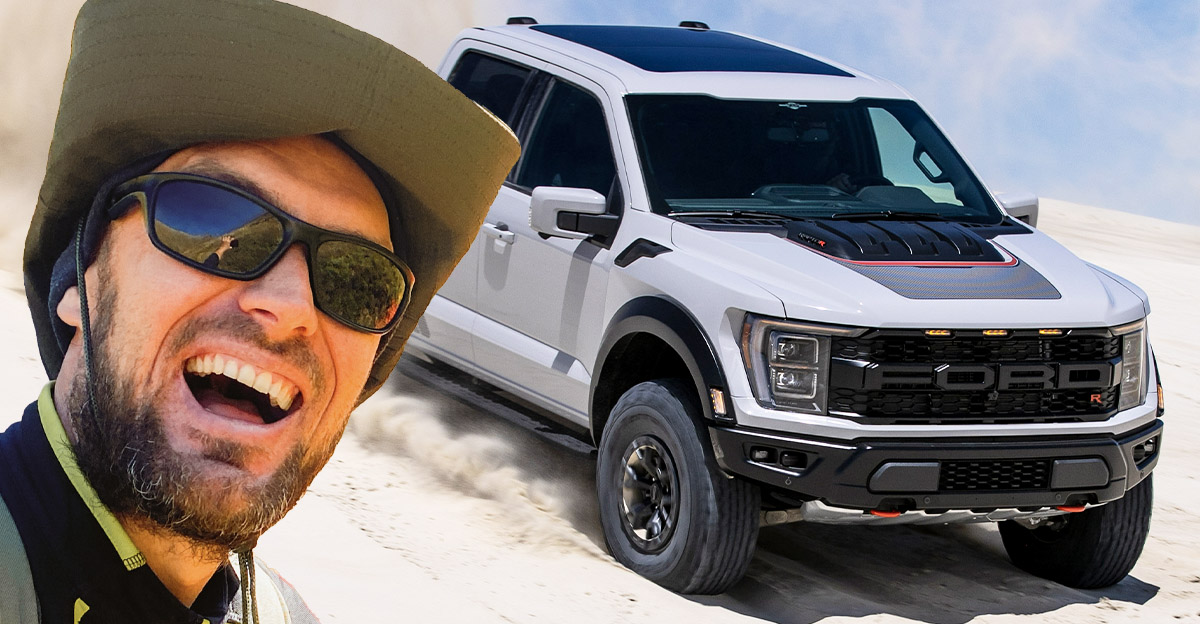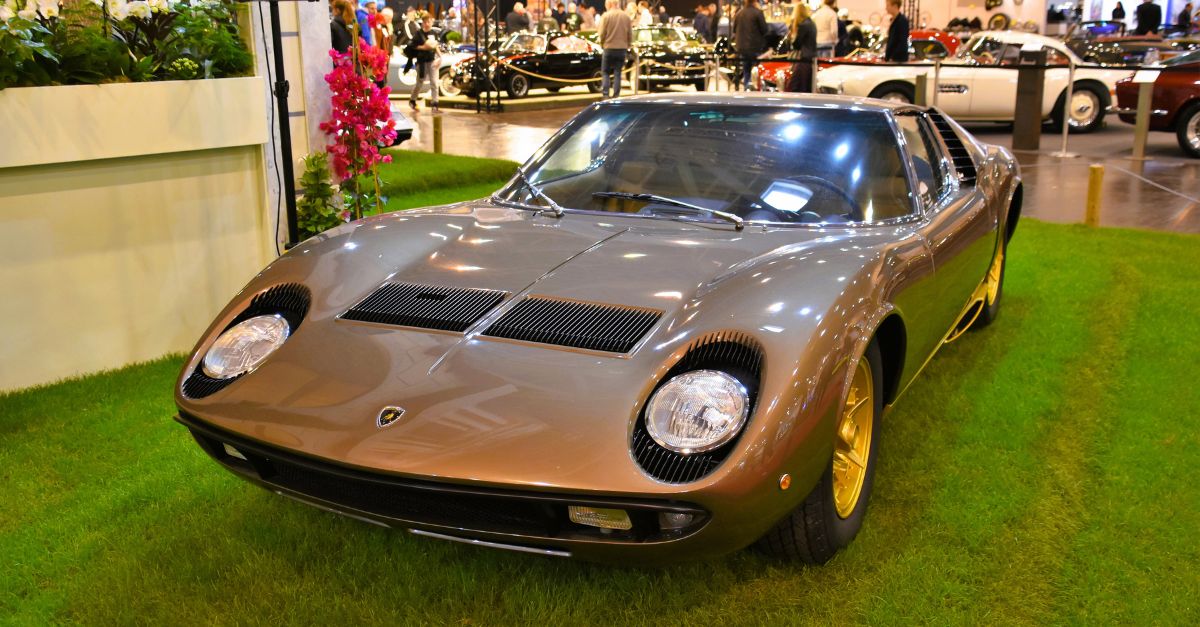The Country's First Police Car Was An EV
Before Teslas, before Priuses, and long before “eco-friendly” was a badge of honor, America’s first police officers once rolled silently through the streets of Akron, Ohio in a battery-powered patrol wagon. It was 1899, and the future seemed to hum with electricity. Designed by city engineer Frank Fowler Loomis and built by the Collins Buggy Company, this odd-looking vehicle represented not only a technological marvel but also an early test of America’s fascination with innovation. This is the forgotten story of how one city made law enforcement electric—more than a century before EVs became cool again.
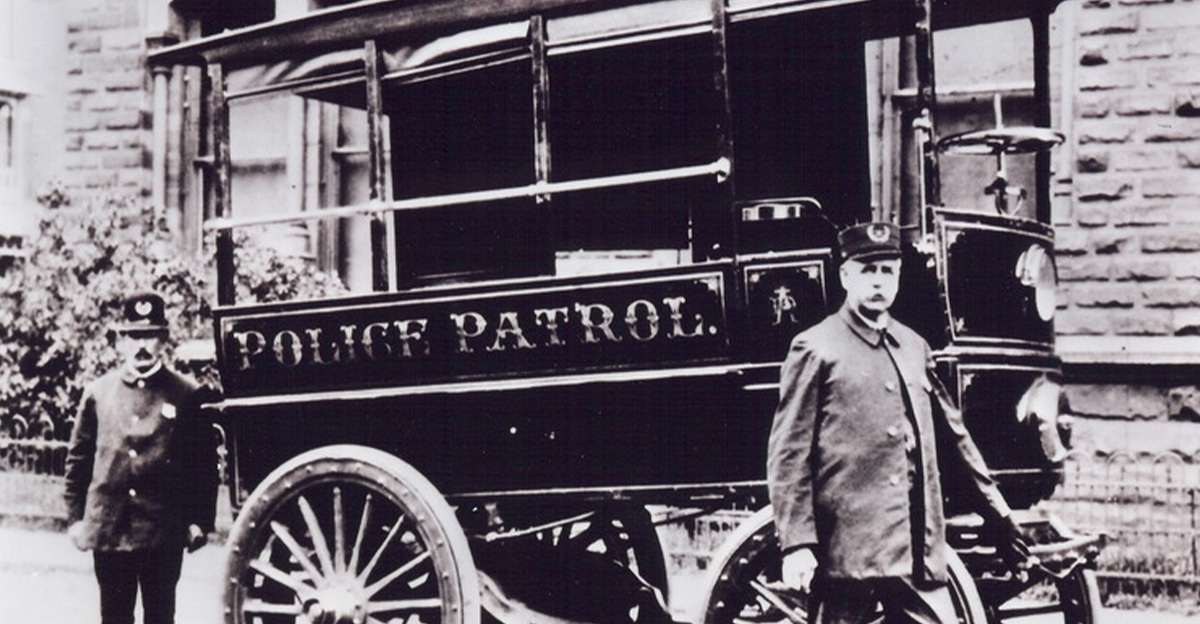
The Era Before Motorization
At the end of the 19th century, police officers still relied on horses and foot patrols to maintain order. Streets were muddy, travel was slow, and officers often found themselves outpaced by criminals on bicycles. Cars were an eccentric novelty—wealthy toys rather than tools. The thought of a battery-powered “wagon” that could ferry officers to emergencies seemed almost fantastical. Yet, Akron’s forward-thinking engineers believed mechanization could improve efficiency, freeing police from the limitations of hoof and heel.
 Swtpc6800 Michael Holley, Wikimedia Commons
Swtpc6800 Michael Holley, Wikimedia Commons
Why Electric Power Made Sense
Electric vehicles weren’t futuristic in the 1890s—they were contenders. Unlike gasoline engines, which were loud, smelly, and required hand cranking, electric cars were smooth, quiet, and easy to operate. Early EVs dominated short-range city driving. For a municipality like Akron, with compact city blocks and hilly terrain, an electric police car seemed both practical and modern. It was a technology that promised speed, silence, and a hint of sophistication—a far cry from the manure-laden days of horse patrols.
Akron Takes The Lead
In 1899, the Akron Police Department did something no other American city had dared: it commissioned the construction of a motorized electric patrol wagon. The project was overseen by Frank Fowler Loomis, the city’s mechanical engineer, who teamed up with the Collins Buggy Company to turn the concept into reality. The result was a hefty, futuristic contraption that looked part stagecoach, part science experiment. But for Akron, it represented civic pride and a declaration that the city was ready for the electric age.
The Price Of Innovation
Innovation never comes cheap. The cost of Akron’s electric patrol wagon was a staggering $2,400—equivalent to more than $80,000 today. For context, that was more than many homes cost in 1899. But the city considered it an investment in modern policing. Officials envisioned faster arrests, quicker medical transport, and a public symbol of progress. To Akron’s leaders, that price tag bought more than a vehicle—it purchased prestige and an identity as one of America’s most forward-thinking cities.
The Tech Specs Behind The Wagon
Under its sturdy steel frame sat two electric motors producing four horsepower each, giving the vehicle an 8-horsepower total output. Power came from rechargeable lead-acid batteries stowed under the floor. The wagon’s top speed was around 18 mph—a sprint compared to horse-drawn patrols—and its range roughly 30 miles. It featured electric headlights, a bell for warnings, and even a small lockable cage for transporting unruly suspects. For 1899, it was nothing short of revolutionary—a purpose-built electric vehicle before the term even existed.
Range, Performance, And Design
While its range seems laughable today, the Akron patrol car’s 30-mile capacity was perfectly adequate for city duties. Patrol routes rarely exceeded a few square miles, and the wagon could be recharged overnight in the department’s garage. The design included polished brass fittings, solid rubber tires, and a tall cabin that could fit a driver, two officers, and one very unhappy prisoner. For the citizens of Akron, seeing this electric behemoth glide past must have looked like a scene from a Jules Verne novel.
Birth Of The Squad Car Concept
The term “squad car” likely traces its roots to this electric pioneer. Unlike traditional single-officer wagons, Akron’s electric patrol vehicle could carry an entire squad—officers, suspects, and even injured citizens when used as an ambulance. It was the first vehicle to merge multiple functions: enforcement, transport, and emergency response. This flexibility became the blueprint for every police cruiser that followed. What started as an experiment in Akron quietly redefined how departments across the nation would organize their fleets.
The Wagon’s First Call
The car’s first mission was as unglamorous as it was historic. Records show its maiden voyage involved picking up a drunken man causing a disturbance on Main Street. But that simple act marked the first time in American history that a motorized police vehicle was dispatched to a call. Locals gathered to gawk, marveling at the strange contraption that hummed instead of neighed. Akron had just driven into the future, one intoxicated suspect at a time.
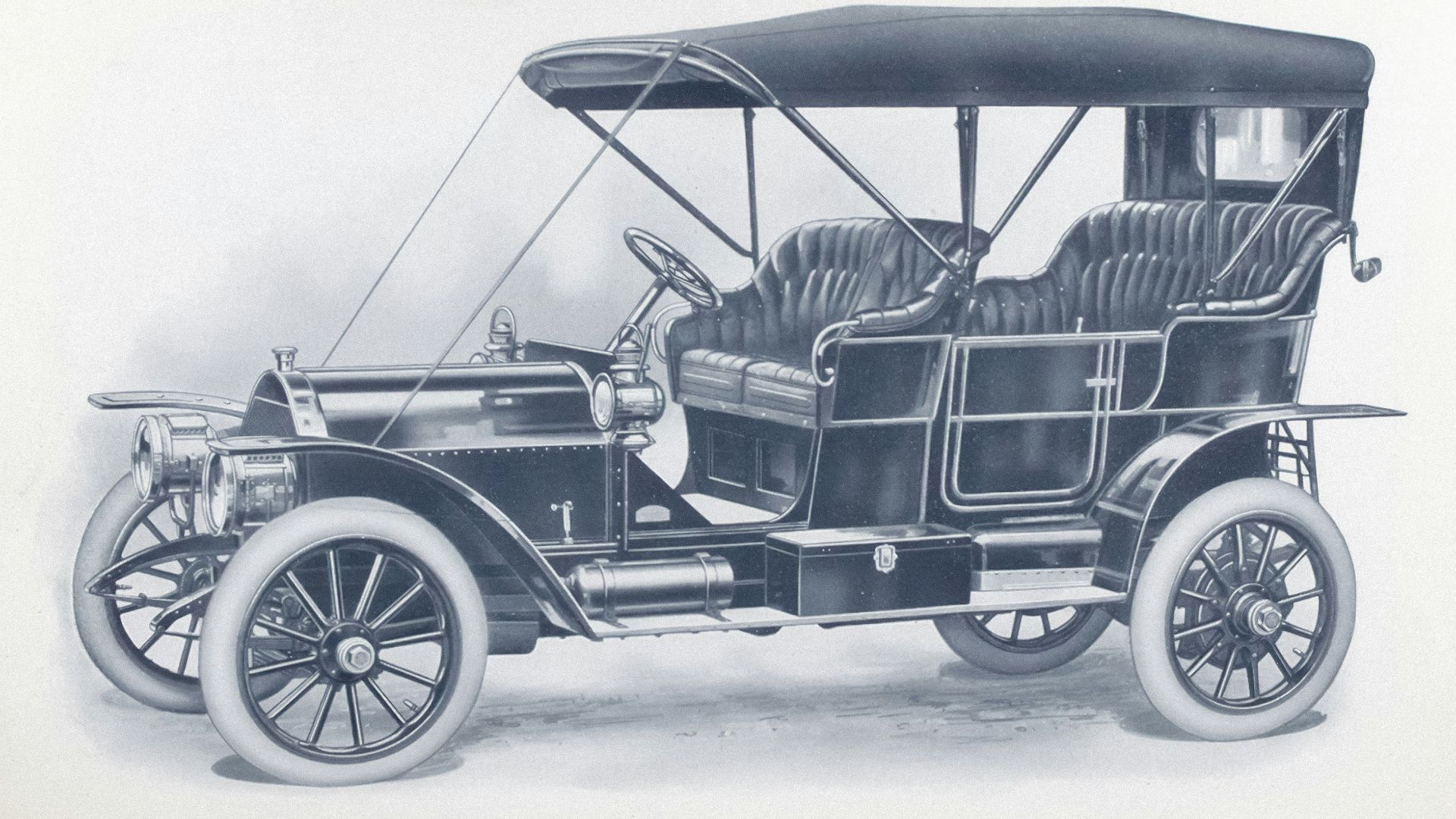 The New York Public Library, Unsplash
The New York Public Library, Unsplash
A New Kind Of Patrol
Soon, the electric wagon became a fixture on Akron’s streets. It transported injured citizens, patrolled public events, and answered emergency calls faster than any horse could gallop. Officers loved the comfort of staying dry in bad weather, and citizens admired the modern marvel. Newspapers hailed it as a technological wonder. In an age when automobiles were still curiosities, Akron’s police car became a rolling advertisement for progress—a signal that America’s heartland could innovate just as boldly as Detroit or New York.
The Riot That Nearly Destroyed It
In 1900, Akron erupted in one of the most violent riots in its history, sparked by outrage over a criminal case. Rioters stormed city buildings and attacked police headquarters. The electric patrol wagon, symbol of the city’s pride, became collateral damage. Mobs captured it, smashed its glass, and rolled it into the nearby Ohio & Erie Canal. The first police car in America—one year old—was now submerged in mud and chaos, its story seemingly over before it had truly begun.
Rescued From The Canal
But this pioneering vehicle refused to die. The day after the riot, city workers fished the wagon from the canal, scrubbed off the grime, repaired the batteries, and got it running again. Within a week, it was back on duty—an almost cinematic comeback. Newspapers described it as “the electric chariot that defied destruction.” In a way, the wagon mirrored the spirit of Akron itself: resilient, resourceful, and determined to keep moving forward no matter the odds.
Making Quiet History
Though its dramatic revival captured local headlines, the electric wagon’s true legacy was quieter. It marked the first successful integration of an electric vehicle into municipal service in the United States. Long before Detroit’s assembly lines, long before the Ford Model T, Akron had already built and operated a fully functional EV for public duty. Yet, over time, this achievement slipped into obscurity—a forgotten milestone in both automotive and law-enforcement history.
Why The World Forgot
The electric police wagon’s disappearance from history wasn’t due to failure—it was due to timing. By the early 1900s, gasoline cars had begun dominating the market. They could travel farther, refuel faster, and cost less to maintain. As internal-combustion engines improved, electric vehicles were pushed to the margins. Akron’s pioneering machine became a historical footnote, overshadowed by roaring engines and the glamour of the new automotive age.
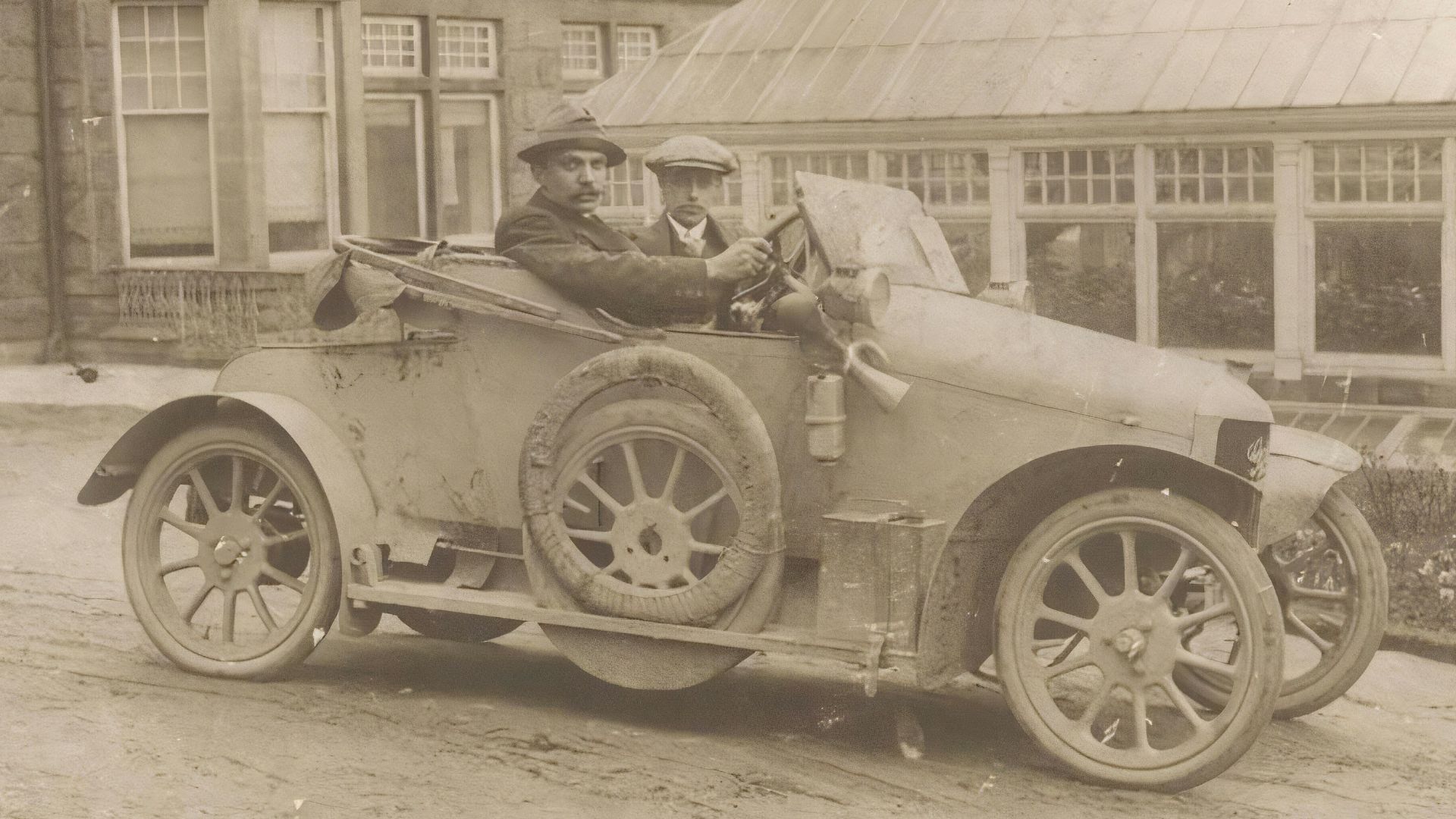 East Riding Archives, Unsplash
East Riding Archives, Unsplash
The Gasoline Takeover
By 1908, police departments in Detroit and other major cities began switching to gasoline-powered cruisers. These vehicles could run longer shifts and chase suspects beyond city limits. The electric wagon simply couldn’t compete. Yet, without its prototype design and proof of concept, police departments might never have considered motorized fleets at all. The electric car walked—or rather rolled—so its gas-powered descendants could run.
The Design Legacy
Even though the Akron patrol car vanished from the streets by 1905, its design cues lived on. Its enclosed cabin inspired the boxy silhouettes of early 20th-century patrol cars. Its prisoner cage became standard. Even the idea of a dedicated signaling device, like its brass gong, evolved into the sirens and flashing lights we know today. It wasn’t just a first—it was a foundation.
The Collins Buggy Company’s Role
The Collins Buggy Company, known for crafting fine horse-drawn carriages, suddenly found itself in the electric-vehicle business. Their craftsmanship gave the wagon a blend of old-world elegance and new-world technology. Though the company eventually faded from existence, its brief partnership with Akron’s police department etched its name into the timeline of automotive evolution—a rare instance when a carriage maker became an EV pioneer.
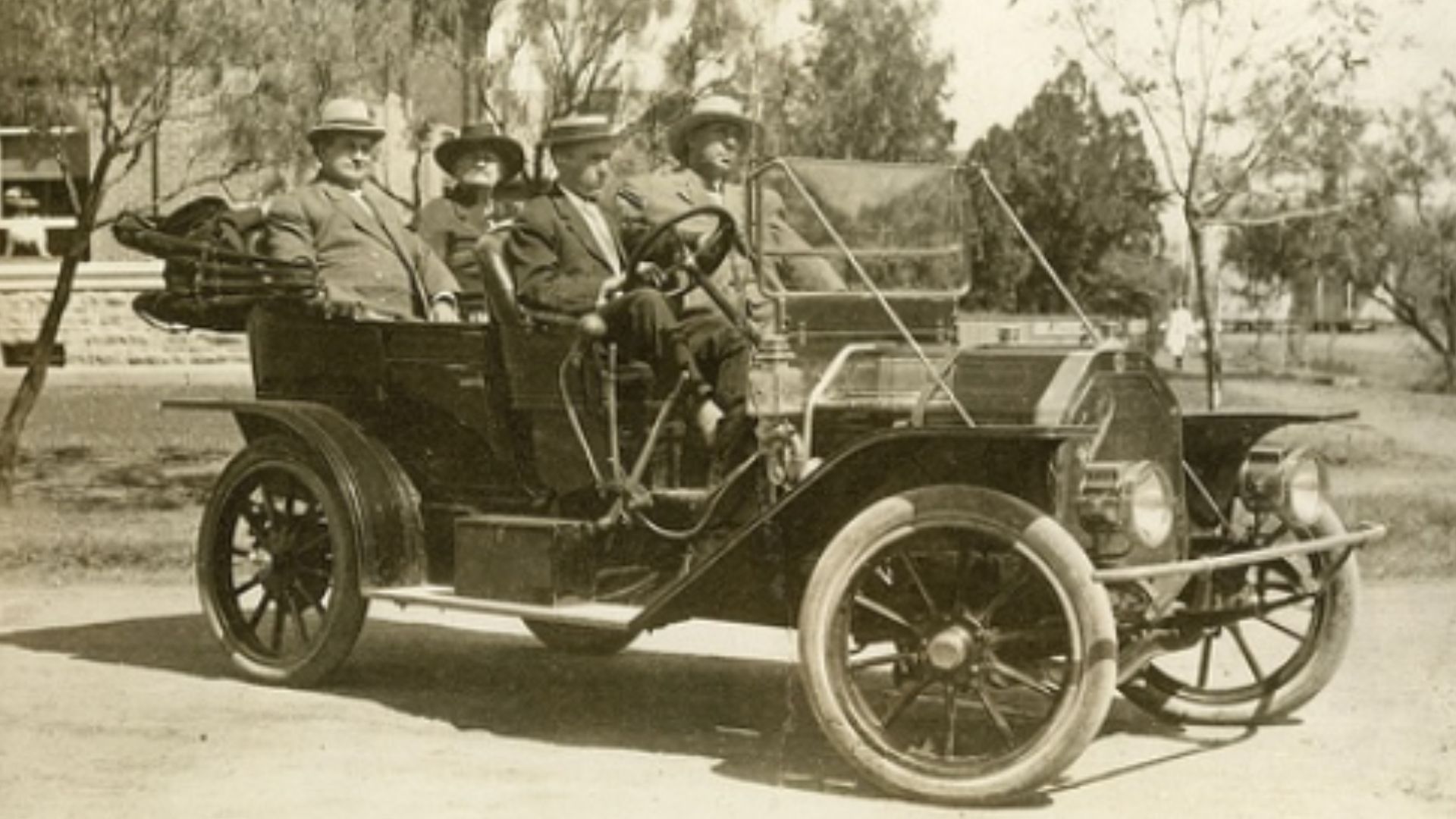 Unknown authorUnknown author, Wikimedia Commons
Unknown authorUnknown author, Wikimedia Commons
The Visionary Engineer
Frank Fowler Loomis wasn’t merely a city engineer—he was an innovator who saw the potential of electricity beyond lighting and trolleys. His mechanical insight led to a vehicle perfectly adapted for public duty. He specified practical features: onboard lighting, recharging ports, and a reinforced chassis. Loomis’s design proved that even local governments could harness cutting-edge technology, inspiring municipal engineers across America to think electrically.
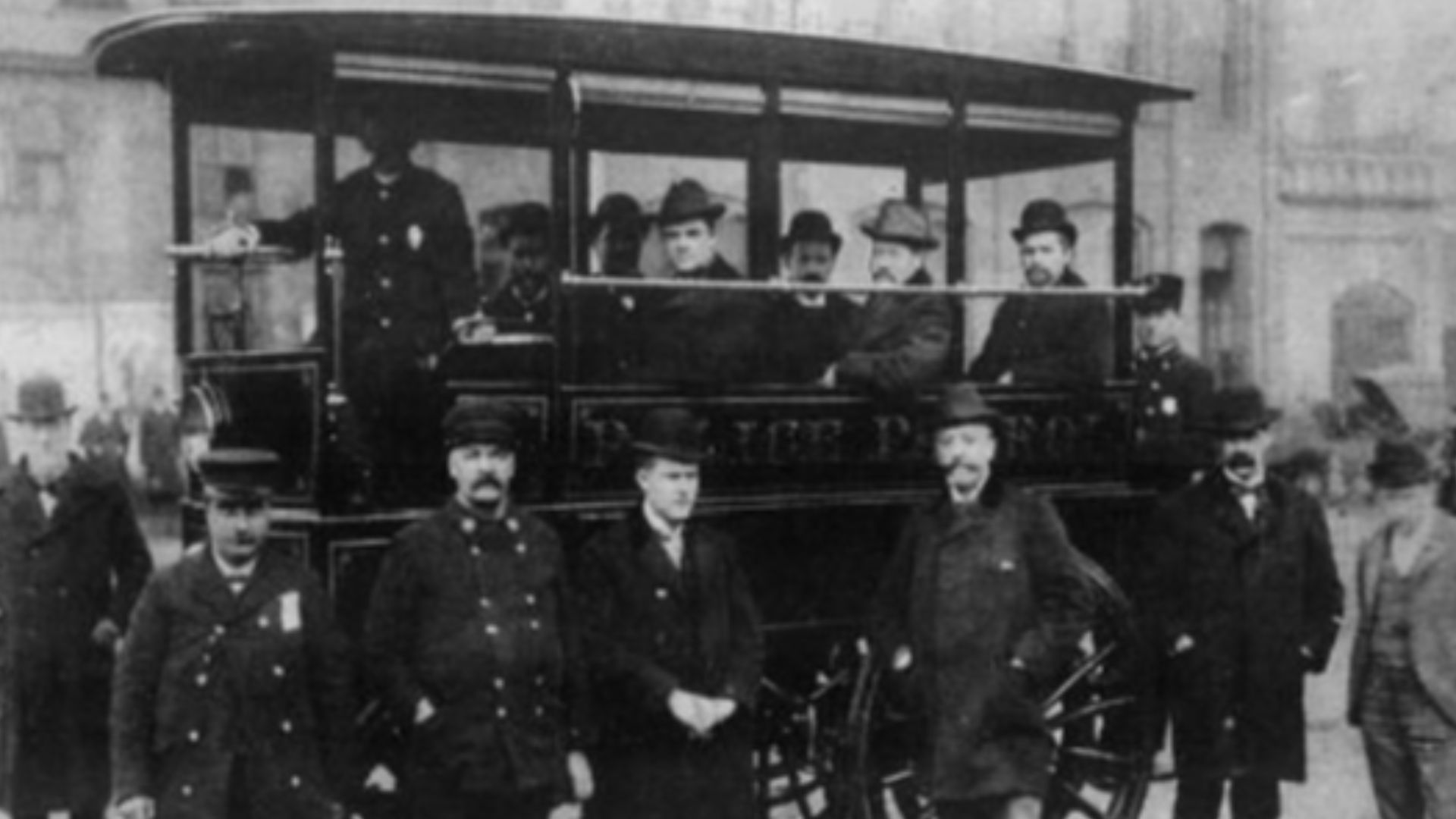 Unknown authorUnknown author, Wikimedia Commons
Unknown authorUnknown author, Wikimedia Commons
Short Service, Long Influence
The electric wagon remained in service until 1905, when it was finally retired and sold for scrap for about $25. Yet in those six years, it transformed how Akron operated and inspired other cities to modernize their police forces. For a brief, brilliant moment, an Ohio city stood at the forefront of an automotive revolution that the rest of the world wouldn’t catch up to for decades.
Why It Faded Away
Despite its charm and utility, the wagon’s limitations became clear. Slow acceleration, heavy weight, and short range made it impractical as cities grew larger. The gasoline engine’s promise of unlimited mobility was irresistible. So the electric patrol car quietly disappeared from service—its parts salvaged, its frame melted down—but its story whispered forward through time, waiting for rediscovery.
Electric Policing Reborn
Fast forward to the 2020s: police departments from New York to Los Angeles are once again adopting electric vehicles, from Teslas to Ford Mustang Mach-Es. Over a century after Akron’s experiment, the circle has closed. Today’s EV patrol cars offer blistering acceleration, advanced software, and zero emissions—luxuries that would have stunned Frank Loomis. Little did he know that his dream would one day become mainstream.
 U.S. Department of Homeland Security (DHS), Wikimedia Commons
U.S. Department of Homeland Security (DHS), Wikimedia Commons
The Cultural Footprint
Though it rarely appears in textbooks, Akron’s electric police car occasionally pops up in museum exhibits and online retrospectives. Vintage photographs show the boxy wagon with proud officers posing beside it—a symbol of civic ambition and curiosity. For enthusiasts of obscure automotive history, it remains one of those perfect trivia gems: the first American police car was electric.
Comparing Then And Now
Imagine the 1899 patrol car next to a modern Ford F-150 Lightning police truck. One could barely manage 18 mph; the other can hit 120. One took hours to recharge; the other fast-charges in minutes. Yet both share a mission—to make cities safer through innovation. The contrast between them isn’t just technological—it’s cultural proof that progress often loops back to its earliest ideas.
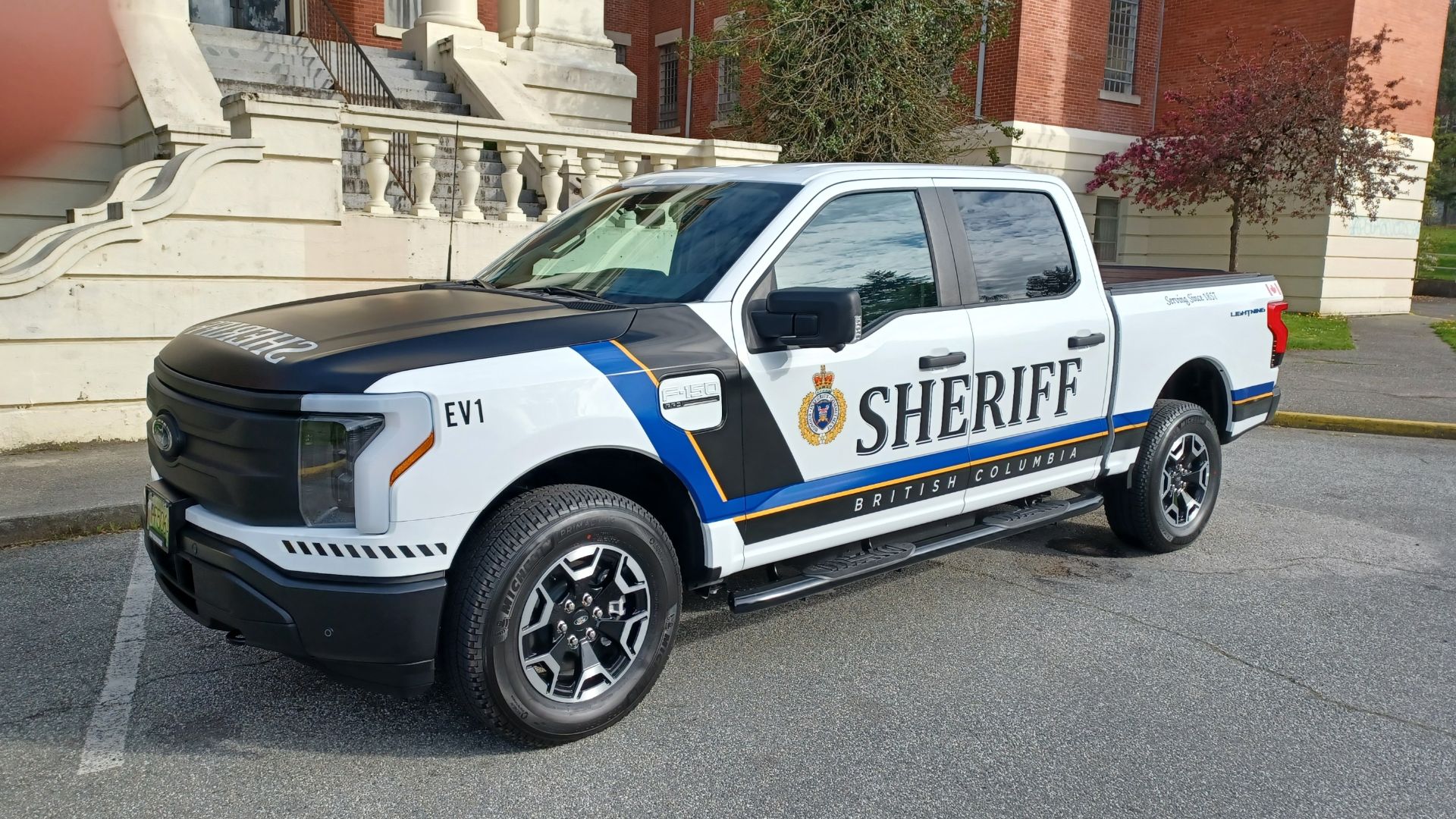 Historicalunit1857, Wikimedia Commons
Historicalunit1857, Wikimedia Commons
Lost, But Not Forgotten
The original Akron patrol car was scrapped, but photos, newspaper clippings, and city records preserve its memory. The Akron Police Museum and local historical societies still honor the vehicle as the first of its kind. Every so often, journalists rediscover its story—reminding us that history’s biggest innovations sometimes begin in the smallest places.
What It Taught Us
The electric police wagon taught a simple but powerful lesson: technology alone doesn’t define progress—imagination does. The willingness to experiment, to risk failure for the sake of improvement, is what pushes civilization forward. Akron’s officers didn’t just drive a machine—they piloted an idea whose time would come again more than a century later.
Why We Should Remember It
Remembering Akron’s electric police car means recognizing that history isn’t always linear. Electric power wasn’t a futuristic invention—it was there from the beginning, abandoned and rediscovered. When we celebrate today’s EV breakthroughs, we’re really reviving a forgotten dream that started with a humming carriage in Ohio, built to keep the peace.
Looking Ahead
Next time you see a sleek electric police SUV glide silently past with flashing blue lights, picture its ancestor—the bulky, battery-powered wagon that rolled through Akron in 1899. Its designers couldn’t have imagined a world of lithium batteries and regenerative braking, but their vision lives on in every EV cruiser today. America’s first electric police car didn’t just keep order—it charged ahead into history.
Conclusion
The 1899 Akron electric patrol wagon may have been short-lived, but its influence endures. It was bold, experimental, and decades ahead of its time. In an age obsessed with horsepower and speed, this silent sentinel reminds us that progress sometimes hums rather than roars. Long before Teslas patrolled the highways, a humble Ohio invention proved that electric power could serve both people and progress—and its spark still lights the road forward.
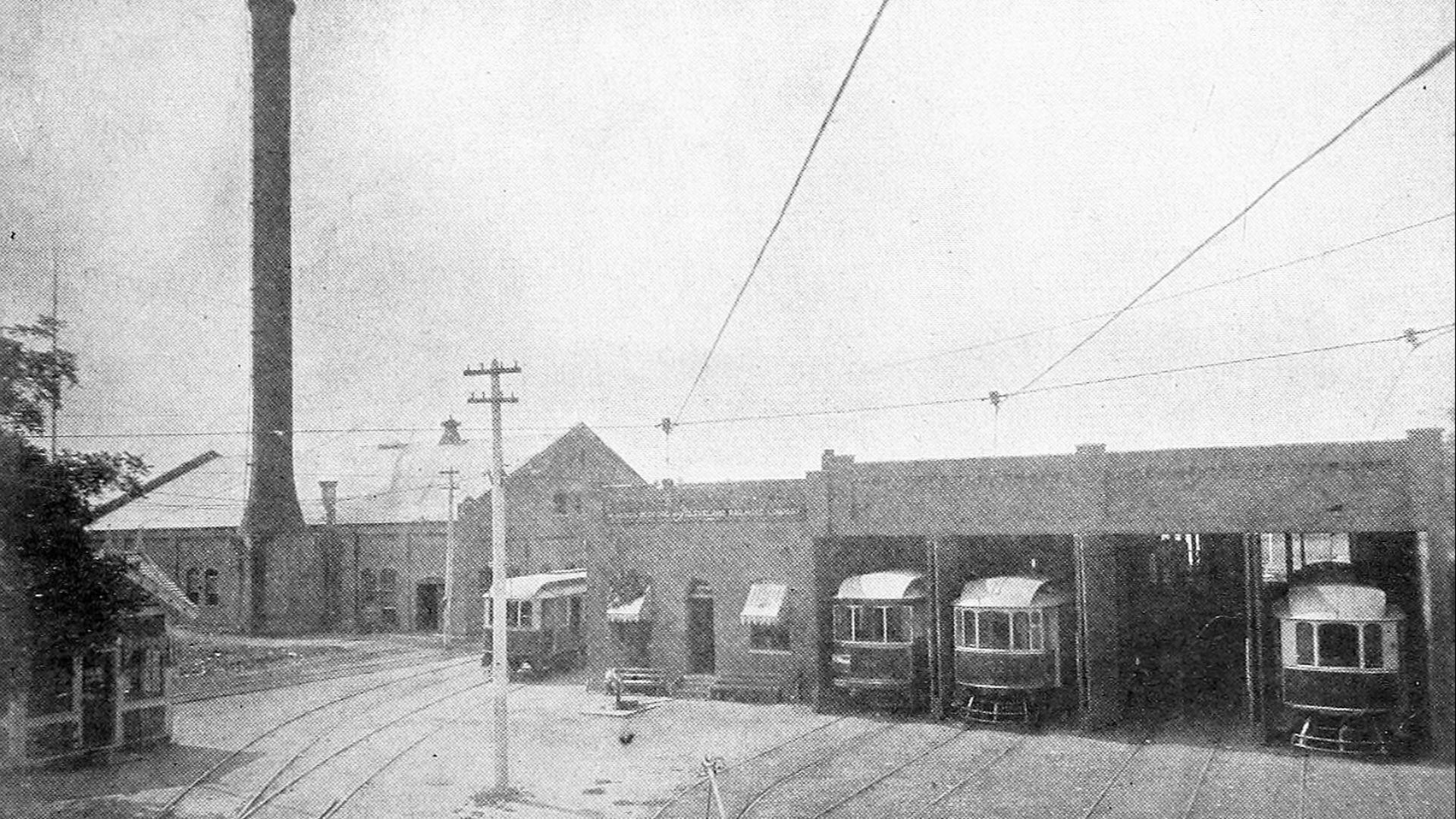 Internet Archive Book Images, Wikimedia Commons
Internet Archive Book Images, Wikimedia Commons
You May Also Like:
Nobody Realizes There's A Toyota Engine Powering These Non-Toyota Cars
Overpriced Classic Cars That Don’t Live Up To The Legend
According To Dating Experts, A Man Is Ready For Love If You Find These Things In His Car

